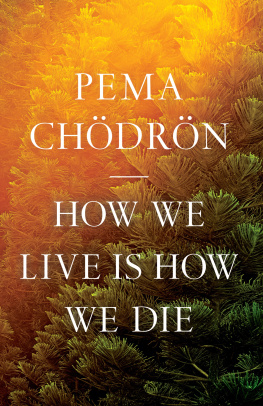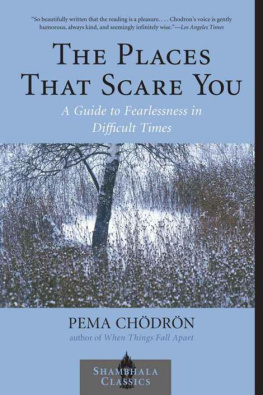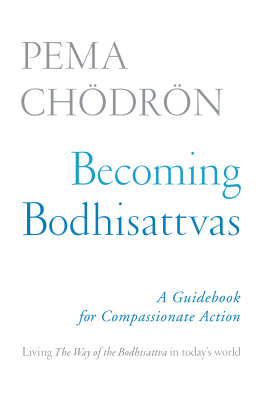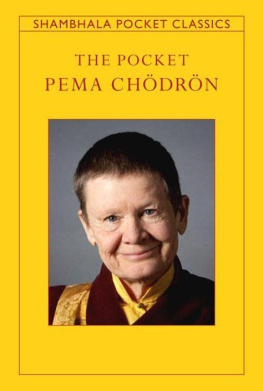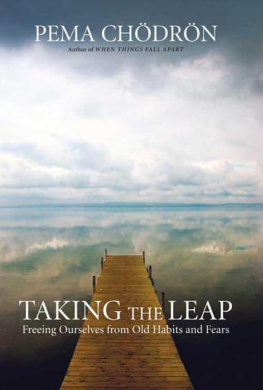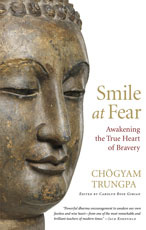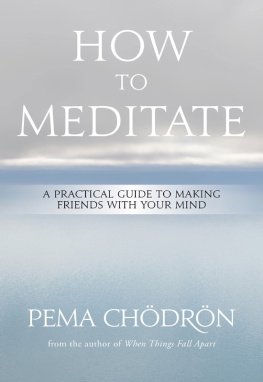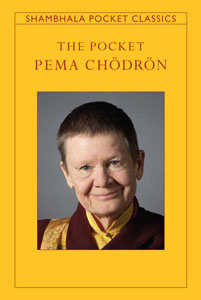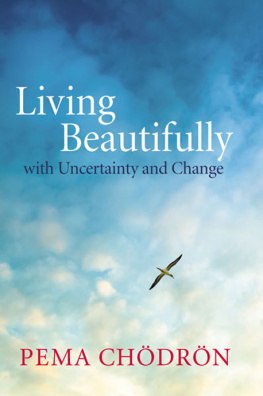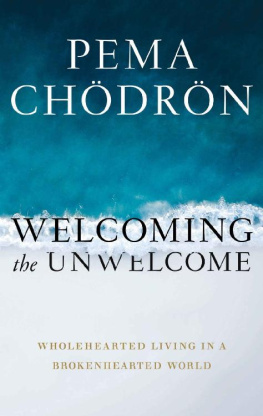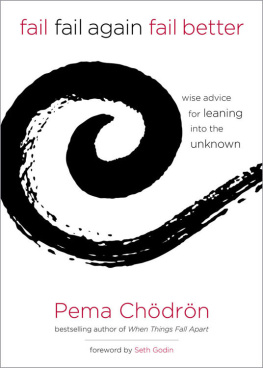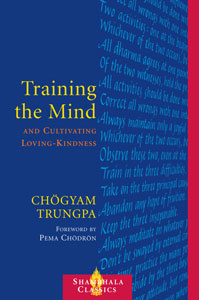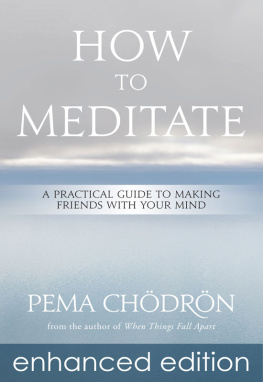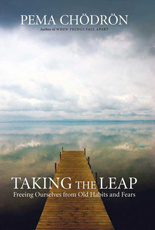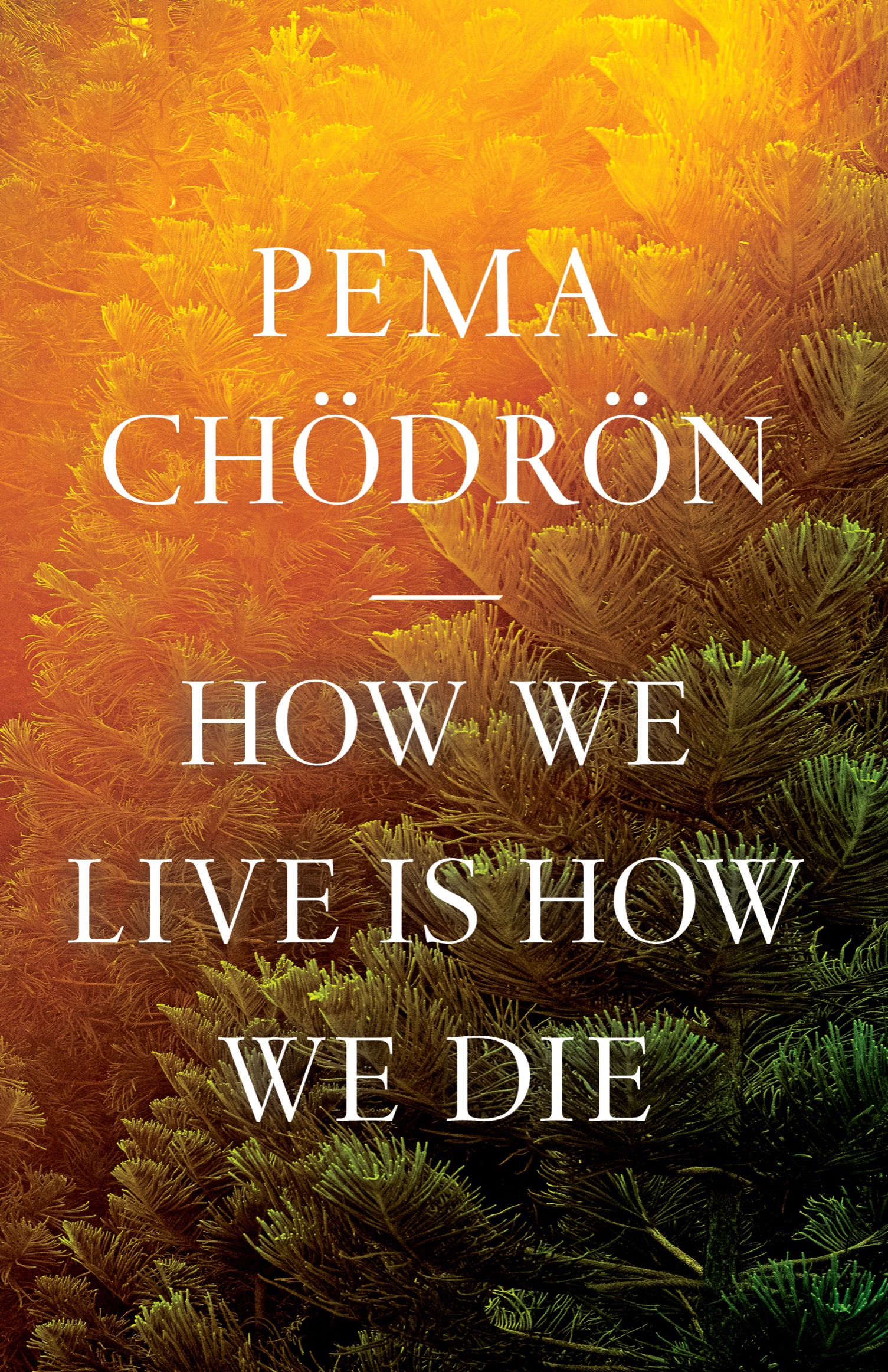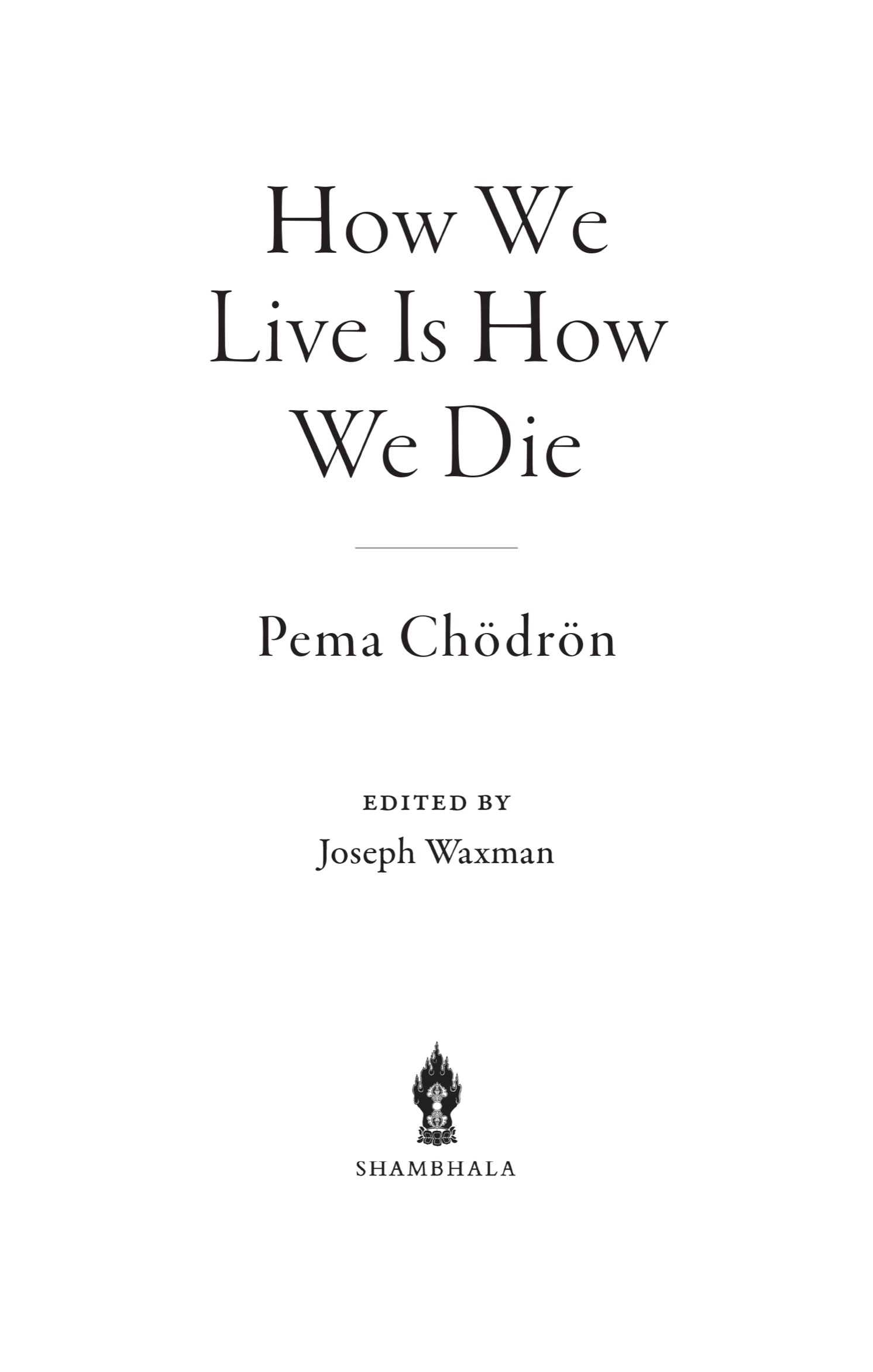Contents
Landmarks
Print Page List
Books by Pema Chdrn
Awakening Loving-Kindness
Becoming Bodhisattvas
Comfortable with Uncertainty
The Compassion Book
Living Beautifully
The Places That Scare You
The Pocket Pema Chdrn
Practicing Peace
Start Where You Are
Taking the Leap
Welcoming the Unwelcome
When Things Fall Apart
The Wisdom of No Escape
Shambhala Publications, Inc.
2129 13th Street
Boulder, Colorado 80302
www.shambhala.com
2022 by the Pema Chdrn Foundation
Meditating with Open Awareness by Yongey Mingyur Rinpoche reproduced with permission from Tergar Meditation Community.
Tonglen from appendix B originally appeared in Lions Roar magazine, https://www.lionsroar.com/how-to-practice-tonglen. Reproduced with permission. The Six Realms of Samsara image from appendix C is Pema Namdol Thaye (detail of a larger artwork), reproduced with permission courtesy of Padma Studios, PadmaStudios.com.
Cover photo: Forest Golden Hour by A.J. Schokora/Stocksy
Cover design: Daniel Urban-Brown
Interior design: Lora Zorian
All rights reserved. No part of this book may be reproduced in any form or by any means, electronic or mechanical, including photocopying, recording, or by any information storage and retrieval system, without permission in writing from the publisher.
Shambhala Publications makes every effort to print on acid-free, recycled paper.
Shambhala Publications is distributed worldwide by Penguin Random House, Inc., and its subsidiaries.
L ibrary of C ongress C ataloging - in -P ublication D ata
Names: Chdrn, Pema, author. | Waxman, Joseph, editor.
Title: How we live is how we die / Pema Chdrn; edited by Joseph Waxman.
Description: First edition. | Boulder, Colorado: Shambhala Publications, Inc., [022] | Includes index.
Identifiers: lccn 2022003735 | isbn 9781611809244 (hardback)
eISBN 9780834844650
Subjects: lcsh : DeathReligious aspectsBuddhism. | Future lifeBuddhism. | BuddhismDoctrines.
Classification: lcc bq 4487 . c 485 2022 |
ddc 294.3/423dc23/eng/20220127
lc record available at https://lccn.loc.gov/2022003735
a_prh_6.0_141032876_c0_r1
This book is dedicated
with love and great appreciation
to my dear sister, Patricia Billings,
who died at age ninety-one in February 2020.
Contemplating death five times a day brings happiness.
B hutanese saying
Contents
Introduction
The Buddha famously advised his students not to buy in to everything he said without first checking it out for themselves. He wanted to promote firsthand experience, not dogma. Dont just take my word for it, he said. Examine my teachings the way a goldsmith examines gold. For instance, the Buddha taught that focusing too much on our own self-interest brings us pain and anxiety, and that extending our love and care toward otherseven strangers or those who cause us troublebrings us joy and peace. This is something we can verify through our own experience. We can experiment with this teaching; we can test it as many times as is necessary for us to be convinced.
The teachings presented in this book, however, appear to be in another category. The Tibetan word bardo, which will frequently come up, commonly refers to the passage following our death and preceding our next life. But how can we verify from our own experience what happens after we die? How can we verify that there will be a next life? In these chapters, you will find descriptions of brightly colored lights, of deafening sounds, of hungry ghosts, of peaceful and wrathful deities. How is it possible to examine such teachings the way a goldsmith examines gold?
My intention is not to convince you to buy in to the Tibetan worldview and to see such descriptions as the definitive truth about what happens after you die. To say anything is definitively like this or like that somehow misses the point. I feel it goes against the spirit of the Buddhas teachings. At the same time, many discerning people alive today study the bardo teachings and take them seriouslynot as an academic subject but as a source of profound wisdom that enhances their lives. It may not be possible for us to confirm these traditional teachings based on our firsthand experience. But whether or not we believe in the Tibetan worldview, if we get to the essence of the bardo teachings, they can benefit us not only after we die, but this year, this day, this moment.
These teachings are based on an ancient Tibetan text called Bardo Tdrol, which was first translated into English as The Tibetan Book of the Dead but which literally means liberation through hearing in the intermediate [or in-between] state. Bardo Tdrol is meant to be read to those who have passed away and entered this state. It describes the various experiences the dead person will go through and thus serves as a guide to help them navigate what is thought to be a disorienting journey from this life to the next life. The idea is that hearing the Bardo Tdrol will optimize ones chances for a peaceful death, a peaceful journey, and a favorable rebirth. In the best-case scenario, one will be liberated altogether from samsara, the painful cycle of birth and death.
The term bardo is usually associated with the intermediate state between lives, but a broader translation of the word is simply transition or gap. The journey that takes place after our death is one such transition, but when we examine our experience closely, we will find that we are always in transition. During every moment of our lives, something is ending and something else is beginning. This is not an esoteric concept. When we pay attention, it becomes our unmistakable experience.
The Tibetan Book of the Dead lists six bardos: the natural bardo of this life, the bardo of dreaming, the bardo of meditation, the bardo of dying, the bardo of dharmata, and the bardo of becoming.
Right now we are in the natural bardo of this life. As I will continue to emphasize throughout this book, the natural bardo of this life is where our work lies. By coming to understand how this life is a bardoa state of continual changewe will be ready to face any other bardos that may arise, however unfamiliar.
The bardo of dying begins when we realize were going to die and lasts until our final breath. This is followed by the bardo of dharmata, which means the true nature of phenomena. Finally, there is the bardo of becoming, during which we make the transition to our next life. In this book, I will talk about these three bardos in detail and also connect them to more familiar experiences that we go through during our lives.
My aspiration for what follows is to write in such a way that you will find these teachings meaningful and helpful, whatever your beliefs. At the same time, Id like to encourage you to lean your openness toward the less familiar aspects of these teachings, as my teacher Dzigar Kongtrul Rinpoche likes to say. Ive always found that my greatest personal growth happens when my mind and heart are more curious than doubtful; my hope is that you will take a similar approach to reading this book.
If we can learn to navigate the continual flow of transitions in our present life, we will be prepared for our death and whatever may follow, no matter what worldview we subscribe to. My teachers, beginning with Chgyam Trungpa Rinpoche, have given me many instructions in how to do this. I have learned from experience that applying these bardo teachings has removed much of my fear and anxiety about death. But just as importantly, this training has made me feel more alive, open, and courageous in my day-to-day experience of life. This is why I would like to pass these teachings and their benefits on to you.

